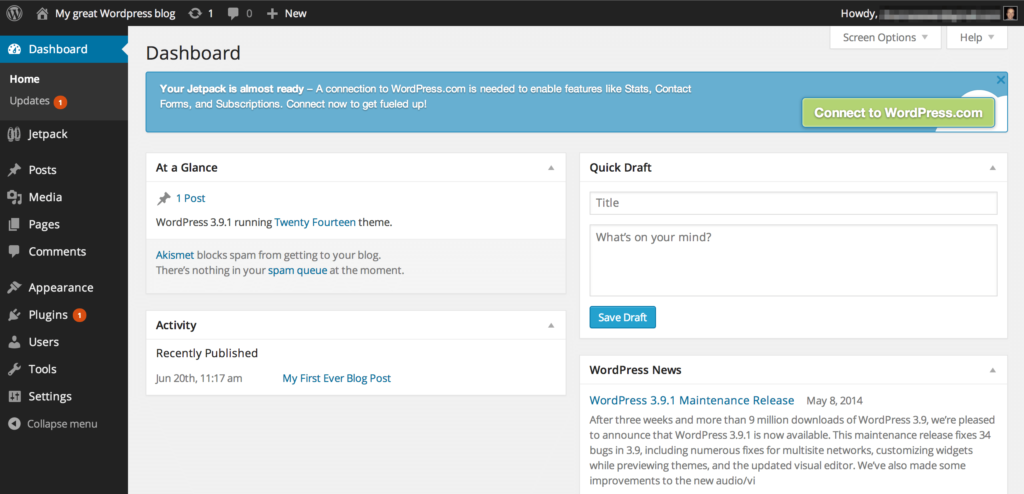For beginners, the term how to create a website as a beginner might be intimidating. No worries! This fascinating adventure may lead to a website that represents your vision with the appropriate direction. You’ll be ready to start your own internet area with this thorough guide’s easy steps.
You’ll learn how to create a website as a beginner from scratch in this detailed tutorial. From domain selection to site design and launch, we’ll cover everything.
Understanding the Basics of how to create a website as a beginner
When it comes to the process of how to create a website as a beginner, it is vital to have a good grasp of the basic principles that are needed before going on to the technical components of the process. This is because it is the only way to ensure that the process will be successful.
What is a website?
A collection of web pages that may be accessed over the internet is referred to as a specific website. The purpose of this platform is to facilitate the dissemination of information, the promotion of goods or services, and the expression of ideas to an international audience.
Domain Name and Web Hosting
A collection of web pages that may be accessed over the internet is referred to as a website. It provides individuals from all over the globe with a means of disseminating information, advertising products or services, or expressing their ideas.
Choose a Domain Name
Domain name is more than just an address; it’s how people find you online. Here are some more helpful hints:
- Easy to remember: Pick a name that is simple to spell and remember. Stay away from long or complicated mixtures.
- Key words: If your website is about a certain topic, like travel, photos, or exercise, you might want to include related terms in the name.
- Do not use trademarks: Make sure that the name you choose doesn’t violate any rights.
- Privacy Protection: To keep your personal information private, think about privacy protection when you register your name.
Subscribe to a Web Hosting Account
Create a website as a beginner containing the process of domain subscription. A domain name that matches your brand or website’s purpose is vital. Short, memorable, and spellable. Select a web hosting company after choosing a domain name. Consider dependability, speed, security, and customer support while choosing.
- Uptime: Consider providers with an uptime percentage of 99.9% or greater, if possible.
- Customer Support: Confirm whether they provide round-the-clock assistance through chat, email, or phone.
- Scalability: Take future expansion into account; can your hosting strategy accommodate a surge in traffic?
- Security: Ensure the provider provides SSL certificates and routine backups for security purposes.
Hostinger and SiteGround are excellent choices for any website owner looking to maximize their online presence.
SiteGround

SiteGround is a top web host for reliability, performance, and support. SiteGround offers WordPress hosting with simple integration, automatic updates, and security. Their hosting design lets clients choose server locations for maximum performance and speed from cutting-edge data centers worldwide. Users can trust SiteGround’s proactive server monitoring, frequent backups, and free SSL certificates to safeguard their websites. The user-friendly design and responsive support of SiteGround make it a popular WordPress hosting solution for beginners and pros.
Hostinger

Hostinger provides inexpensive, high-quality web hosting. Hostinger offers inexpensive, high-performance hosting for startups and small businesses. Hostinger’s high-performance servers and industry-leading uptime guarantees speed up and keep websites up. Hostinger’s flexible plans let clients add resources as their websites grow in traffic and complexity. Hostinger’s free domain registration, SSL certificates, and user-friendly website builder make it an enticing alternative for economical hosting without compromising quality or functionality.
Install a Content Management System (CMS)
Content management systems (CMS) allow website content creation and administration easier without coding. WordPress is a popular CMS with a simple interface and many customization possibilities. Many web hosting companies provide one-click WordPress installation, making it easy for newcomers.
Install WordPress on Your Hosting Account

- You should log in to the control panel of your hosting account, which is often cPanel.
- The “WordPress” or “Softaculous” installation should be the one you look for.
- To set up WordPress, click the “Install” button and then follow the on-screen menu.
Choose a Theme
When you create a website as a beginner using WordPress, you have access to a wide range of themes, which are essentially design templates. Examine the free as well as the paid alternatives, and choose the one that is most suitable for the characteristics of your business.
Customize Your Theme
You can change how your website looks and feels by choosing a theme after installing WordPress. Many thousands of free and paid themes are out there, so you should be able to find one that fits your needs and style.
- Add your image to customize your style.
- Modify the styles and colors.
- Design a main style.
Customize Your Website’s Design
Once WordPress is installed, you may choose a theme to personalize the appearance and feel of your site. There are many free and paid themes available, so you may choose one that matches your style and needs. To create a unique look, customize your theme by adding your logo, altering colors, and organizing layout components.
Create and Organize Your Content
Now that you have the style of your website, you know the basic steps of how to create a website as a beginner, it’s time to start adding information. Write writing that is interesting, speaks to your audience, and fits with the style of your brand. Your guests will find it easy to find the information they need if you divide your content into pages or posts. Add pictures, videos, and slideshows, along with other interactive features, to make your site look better.
Add Essential Pages
Every website must include a certain number of standard pages, including the following:
- Home: Introduce your site and its purpose.
- About: Share information about yourself or your business.
- Contact US: Provide ways for visitors to get in touch.
- Blog: If you plan to write articles, set up a blog page.
Explore Plugins
Through the use of WordPress plugins, you have the potential to improve the functioning of your website. The following are some of the ones that are unquestionably essential or essential:
- Yoast SEO: Helps with search engine optimization.
- Wordfence: Boosts security.
- Contact Form 7: Allows you to create forms.
Design Your Website
A well-designed website is crucial for a positive user experience. Consider the following design principles:
- Clean Layout: Keep it clutter-free and easy to navigate.
- High-Quality Images: Use relevant images that enhance your content.
- Consistent Fonts and Colors: Maintain a cohesive look throughout your site.
- Logical Organization: Arrange content logically so visitors can find what they need.
Add Pages and Further Customization
As your website grows, add more pages:

- Services: Describe what you offer.
- Portfolio: Showcase your work (if applicable).
- Testimonials: Feature client feedback.
- Privacy Policy: Important for legal compliance.
Customize menus, headers, and footers to improve navigation. Test your website on different devices (desktop, tablet, mobile) to ensure responsiveness.
Don’t know how to code? No problem!
It is not required for you to have a thorough grasp of coding in order to be successful in how to create a website as a beginner using WordPress. You may successfully create a website as a beginner using WordPress. Those who are interested in the topic should educate themselves on HTML and CSS since doing so will allow them to make a variety of changes. If you are interested in the subject matter, you should educate yourself. Educational opportunities are a wonderful choice to consider if you have an interest in the topic.
Avoid Common Mistakes
Learn from others’ experiences to obtain fresh perspectives:
- How to Be Straightforward: Most websites just need a domain name and hosting, which costs around $10 per month. The only thing needed is this.
- Remember to backup your website often to prevent losing data. Always remember this.
- Keeping your WordPress theme, plugins, and version updated is crucial to keeping up with WordPress advancements.
Test Your Website
Now you know how to create a website as a beginner and you have created your website now take the time to test your website fully on a number of devices and browsers before putting it online. Make sure there are no typos, lost links, or problems with the layout. Also, make sure that all of the functions, like contact forms and e-commerce features, are working properly. As soon as you’re happy with the testing:
- Compatible Browsers: See how your site looks in Chrome, Firefox, Safari, and other platforms.
- Test all forms, buttons, and clickable parts to make sure they work.
- Speed: To make opening times faster, use tools like Google PageSpeed Insights.
Launch and Promote

You will know that you are ready to launch when you have attained a level of satisfaction with your current situation. On the other hand, this is not the conclusion of the tale:
- Please provide us a sitemap of your website: Your sitemap ought to be received by Google Search Console in the event that you provide it for submission.
- Social media platforms. Make sure that your website gets shared on a number of different social networking sites with your audience.
- Attempt to strike up a conversation with the guests: It is really important that you respond to both the comments and the emails as quickly as you can.
Conclusion
Starting from how to create a website as a beginner from scratch might be easy for novices with the appropriate strategy and tools. By following this advice and being patient and persistent, you can develop a professional website that meets your aims and appeals to your target audience. As your requirements and tastes change, update and enhance your site and ask for assistance from online tutorials, forums, and communities. Happy website-building!
FAQ
How to create a website as a beginner without experience?
Absolutely! Our step-by-step approach makes website construction easy for beginners.
How do I choose a website domain name?
Consider your brand, audience, and availability while choosing a domain. We’ll guide you to the proper decision.
Do I need coding to construct my website?
No coding needed! We’ll walk you through website design customization utilizing simple tools and templates.
What are the search engine optimization stages for my website?
Search engine optimization encompasses keyword research, content optimization, and website speed enhancement. We describe them in our guide.
After creating my website, how can I get traffic?
After creating your website, you may drive visitors via social media, email, and SEO. We’ll provide starting advice.


